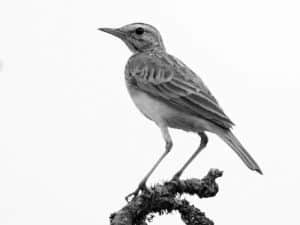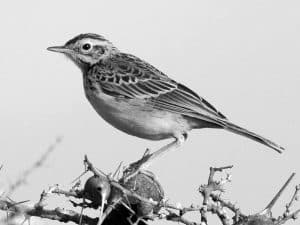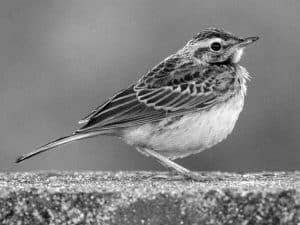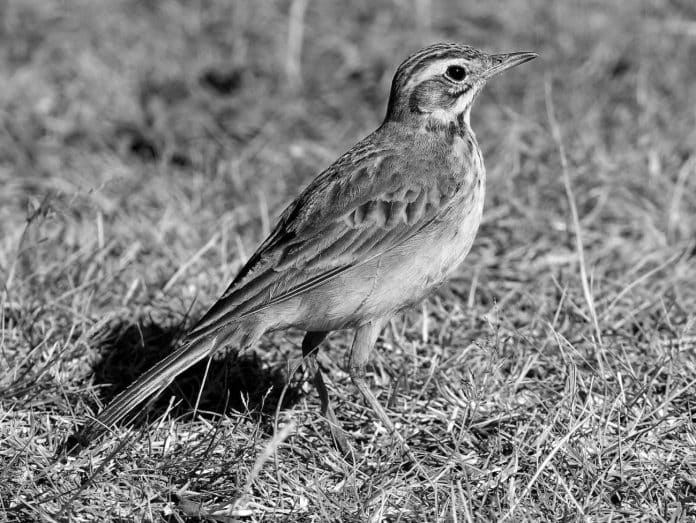Introduction to the African Pipit
The African Pipit is a small, ground-dwelling bird species that is native to the African continent. As a resident of Tanzania, this unassuming yet captivating avian plays a vital role in the country’s rich biodiversity. With its distinctive appearance and fascinating behaviors, the African Pipit in Tanzania is a delight for birdwatchers and nature enthusiasts alike. In this comprehensive guide, we will delve into the world of the African Pipit, exploring its habitat, physical characteristics, behaviors, and conservation status, as well as providing valuable tips for spotting this remarkable bird during your travels in Tanzania.
Habitat and Distribution of the African Pipit in Tanzania

The African Pipit is widely distributed across the African continent, with its range extending from the northern regions of Africa, such as Morocco and Egypt, to the southern parts of the continent, including South Africa. Within this vast geographical area, Tanzania serves as a prime habitat for the African Pipit, where it can be found in a variety of landscapes.
In Tanzania, the African Pipit thrives in open, grassy habitats, including savannas, grasslands, and even agricultural areas. These birds prefer environments with a mix of short and tall vegetation, providing them with the necessary cover and foraging opportunities. They can often be spotted along roadsides, in pastures, and even in urban parks and gardens, making them a common sight for both local residents and visitors to the country.
Physical Characteristics of the African Pipit
The African Pipit is a small bird, typically measuring between 14 to 16 centimeters (5.5 to 6.3 inches) in length and weighing around 20 to 25 grams (0.7 to 0.9 ounces). Its slender build and long legs are well-suited for its ground-dwelling lifestyle.
One of the most distinctive features of the African Pipit is its plumage, which is primarily a dull, earthy brown color with subtle streaks and markings. This coloration helps the bird blend seamlessly into its grassy surroundings, providing effective camouflage against predators. The bird’s bill is small and pointed, adapted for foraging on the ground, while its eyes are dark and expressive.
Another notable characteristic of the African Pipit is its long, slender tail, which it often flicks or wags as a form of communication and display. This behavior, along with the bird’s upright posture and energetic movements, makes the African Pipit easily recognizable in its natural habitat.
Behavior and Diet of the African Pipit
The African Pipit is known for its lively and energetic behavior. These birds are typically observed foraging on the ground, hopping and running in search of their preferred prey. Their diet consists mainly of insects, such as beetles, grasshoppers, and ants, as well as small spiders and other invertebrates.
In addition to their ground-based foraging, African Pipits are also known to perch on low vegetation, fences, or even power lines, where they can scan the surrounding area for potential threats or opportunities. When disturbed or alarmed, they may take flight, often displaying a distinctive undulating or bouncing flight pattern.
The African Pipit is also known for its vocal repertoire, which includes a variety of chirps, trills, and whistles. These vocalizations serve various purposes, such as communication between individuals, territorial defense, and courtship displays.
Breeding and Reproduction of the African Pipit
The breeding season for the African Pipit in Tanzania typically coincides with the rainy season, which can vary depending on the region. During this time, the birds engage in courtship rituals, which may involve elaborate displays, such as wing-flapping and tail-wagging.
The female African Pipit is responsible for constructing the nest, which is typically a simple cup-shaped structure made from grasses, leaves, and other natural materials. The nest is often hidden in dense vegetation or concealed under a tuft of grass, providing protection from predators and the elements.
The female African Pipit will lay a clutch of 2 to 5 eggs, which she will incubate for approximately 12 to 14 days. Once the chicks hatch, both the male and female parents will share the responsibility of feeding and caring for the young. The chicks will remain with their parents for a few weeks after fledging, learning essential survival skills before eventually becoming independent.
Conservation Status and Threats to the African Pipit

The African Pipit is currently classified as a species of Least Concern by the International Union for Conservation of Nature (IUCN). This means that the species is not considered to be at a high risk of extinction in the near future.
However, like many other bird species, the African Pipit faces various threats to its long-term survival. One of the primary threats is habitat loss, as the conversion of natural grasslands and savannas into agricultural land or urban development can disrupt the bird’s preferred living environments.
Additionally, the use of pesticides and other agricultural chemicals can have a negative impact on the African Pipit’s food sources, potentially leading to a decline in population numbers. Climate change and the associated changes in weather patterns and vegetation may also pose challenges for the species in the future.
To ensure the continued presence of the African Pipit in Tanzania’s diverse ecosystems, conservation efforts and sustainable land management practices are crucial. Ongoing research and monitoring, as well as public awareness campaigns, can help to safeguard this important avian resident.
Birdwatching Tips for Spotting the African Pipit in Tanzania
For birdwatchers and nature enthusiasts visiting Tanzania, spotting the elusive African Pipit can be a rewarding experience. Here are some tips to help you increase your chances of observing this fascinating bird:
- Look in the Right Habitats: As mentioned earlier, the African Pipit prefers open, grassy areas, such as savannas, grasslands, and even agricultural fields. Keep your eyes peeled in these types of environments, especially along roadsides and in parks or nature reserves.
- Observe Carefully: The African Pipit’s dull, earthy coloration can make it challenging to spot, especially when it is stationary and blending into the surrounding vegetation. Scan the ground and low vegetation carefully, and watch for any movement or flicks of the tail.
- Listen for Vocalizations: The African Pipit’s distinctive calls, including chirps, trills, and whistles, can help you locate the bird. Pay attention to any unusual bird sounds you hear in your surroundings, and try to identify the source.
- Time Your Visit: The African Pipit is most active during the early morning and late afternoon hours, when it is more likely to be foraging or engaging in other behaviors. Plan your birdwatching excursions accordingly to increase your chances of spotting this elusive species.
- Use Binoculars or a Spotting Scope: Equipping yourself with high-quality optics, such as binoculars or a spotting scope, can greatly enhance your ability to observe the African Pipit’s features and behaviors from a distance.
By following these tips and keeping an observant eye on your surroundings, you’ll be well on your way to adding the African Pipit to your Tanzania birdwatching checklist.
Interesting Facts about the African Pipit
The African Pipit is a fascinating bird species with a variety of unique characteristics and behaviors. Here are some interesting facts about this ground-dwelling avian resident of Tanzania:
- Adaptations for Ground-Dwelling: The African Pipit’s long legs and slender build are well-suited for its ground-based lifestyle, allowing it to move quickly and efficiently across the terrain.
- Territorial Behavior: These birds are known to be highly territorial, often engaging in aggressive displays and vocalizations to defend their nesting and foraging areas.
- Migratory Patterns: While some African Pipit populations are sedentary, others may undertake seasonal migrations, moving to different areas in response to changes in food availability or environmental conditions.
- Communal Roosting: During the non-breeding season, African Pipits have been observed roosting communally, with several individuals sharing a single roosting site.
- Relationship with Livestock: In some regions, African Pipits have been known to associate with grazing livestock, taking advantage of the insects and other invertebrates disturbed by the animals‘ movements.
- Predator Avoidance Tactics: When faced with a potential threat, African Pipits may employ various strategies, such as freezing in place or taking flight, to avoid detection and escape from predators.
- Importance in Ecosystem: As ground-dwelling insectivores, African Pipits play a crucial role in the balance of their local ecosystems, helping to control insect populations and contributing to the overall health of the environment.
These and other fascinating facts about the African Pipit highlight the unique adaptations and behaviors that have allowed this species to thrive in the diverse landscapes of Tanzania.
African Pipit Research and Conservation Efforts in Tanzania

Ongoing research and conservation efforts are crucial for the long-term survival of the African Pipit in Tanzania. Scientists and conservation organizations are actively studying the species’ population dynamics, habitat preferences, and the various threats it faces in order to develop effective management strategies.
One of the key areas of research focuses on understanding the impact of human activities, such as agricultural expansion and urbanization, on the African Pipit’s preferred habitats. By gathering data on the bird’s response to these changes, researchers can inform land-use planning and conservation policies to ensure the species’ continued presence in Tanzania’s ecosystems.
In addition to scientific research, conservation organizations in Tanzania are also working to raise public awareness about the importance of the African Pipit and the need to protect its natural habitats. Through educational campaigns, community outreach programs, and collaborative efforts with local stakeholders, these organizations aim to foster a deeper appreciation for the country’s avian biodiversity and encourage sustainable land management practices.
To learn more about the African Pipit and how you can contribute to its conservation, consider joining a local birdwatching club or supporting conservation organizations working to protect Tanzania’s unique avian species. Your passion and involvement can make a real difference in safeguarding the future of this remarkable ground-dwelling resident.
Conclusion: Appreciating the African Pipit in Tanzania’s Biodiversity
The African Pipit is a captivating and integral part of Tanzania’s rich avian diversity. As a ground-dwelling resident, this unassuming bird plays a vital role in the delicate balance of the country’s ecosystems, contributing to the overall health and resilience of the natural environment.
Through this comprehensive guide, we have explored the many facets of the African Pipit, from its distinctive physical characteristics and fascinating behaviors to the threats it faces and the ongoing conservation efforts to protect it. By understanding and appreciating the African Pipit, we can gain a deeper appreciation for the remarkable biodiversity that Tanzania has to offer.
As you venture into the diverse landscapes of Tanzania, keep your eyes and ears open for the presence of the African Pipit. Observe its energetic movements, listen to its melodic vocalizations, and marvel at its remarkable adaptations to the ground-dwelling lifestyle. By engaging with and supporting the conservation of this remarkable species, you can contribute to the preservation of Tanzania’s natural heritage for generations to come.

































